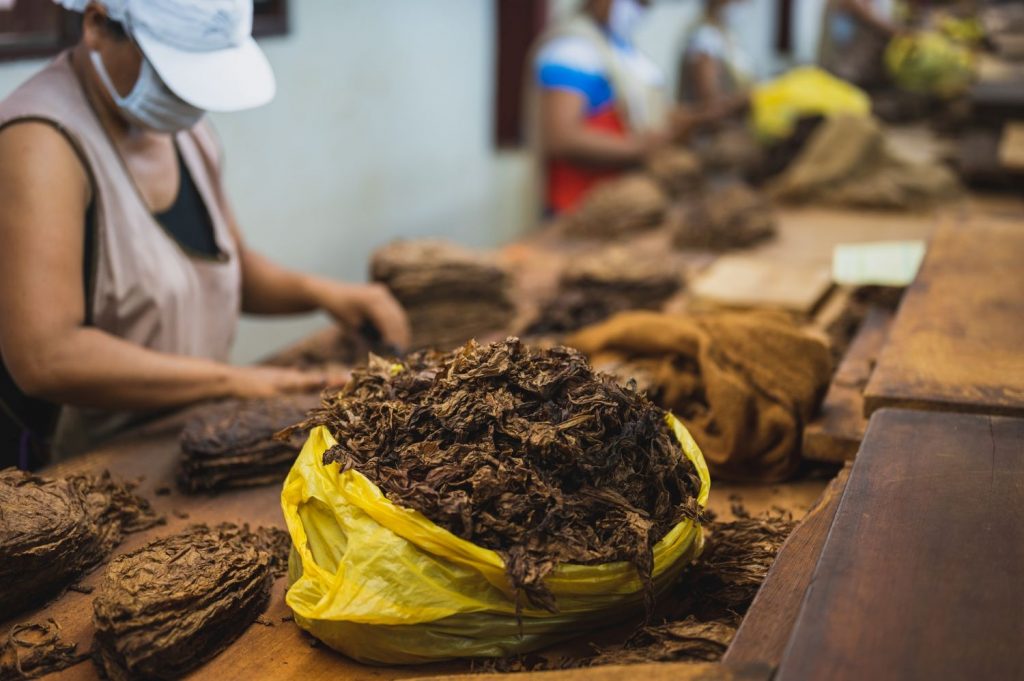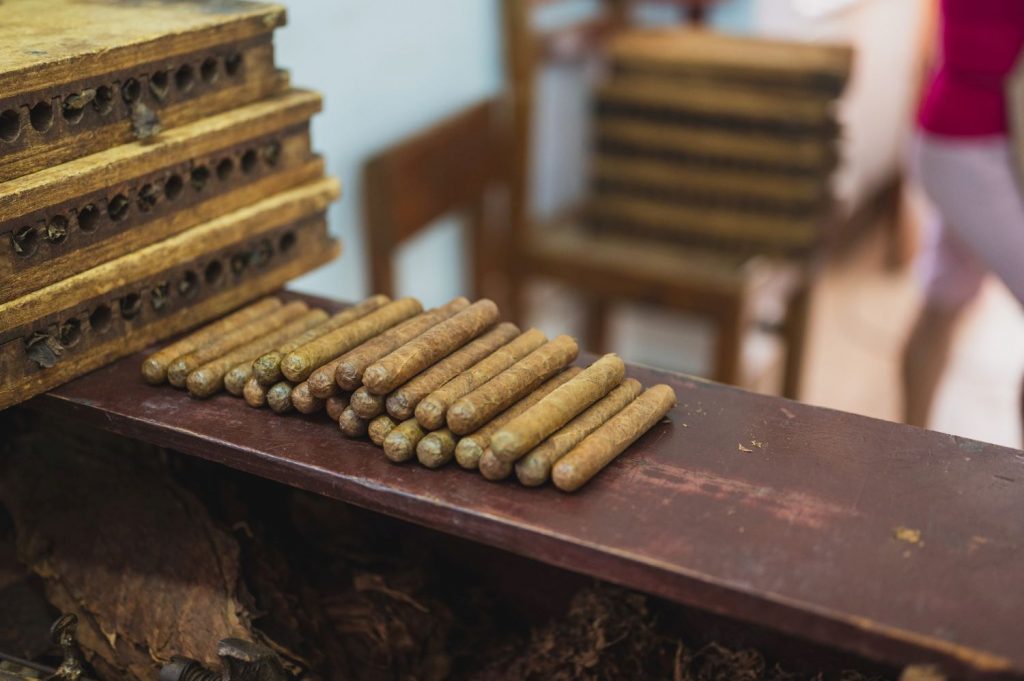If you’ve been looking for the top ten cigars to smoke this year, we are sure you’ve found Connecticut cigars at the top of the list. And with good reason: The Connecticut tobacco production is known to produce a very smooth, mellow, and creamy smoking experience.
Besides, Connecticut cigars never go out of style. That is why recognized cigar brands like Ashton, 5 Vegas Gold, and Davidoff use the Connecticut tobacco plant as the cream of the crop for their cigars wrappers.
So today, this guide to Connecticut cigar tobacco is here to help you make sense of this sort-after premium cigar. Let’s start with the Connecticut cigar history.

How It Started
The name Connecticut was given to the cigar following the initial location where the Connecticut tobacco was grown: beside the long Connecticut River. Soon after, this tobacco plant became a staple in the American cigar culture.
By the 1800s, manufacturers had started branding their cigars, which further fueled the farming and production of the tobacco plant. By 1830, close to 1000 acres of land in the region were used for growing tobacco.
Almost a decade later, in 1921, the spread of cigar tobacco farming saw an increase to about 31,000 acres of land. Today, any beginner cigar smoker can tell there are different cigar sizes, but they might get confused by the different available Connecticut cigar types in the market.
That being said, let us dive into the guide to Connecticut cigar tobacco.
A Guide To Connecticut Cigar Tobacco
Typically, you will find three main types of tobacco which include:
- The Connecticut Broadleaf Tobacco
- The Connecticut shade tobacco
- The Ecuador Connecticut
Connecticut Broadleaf Tobacco
Connecticut native Nicholas Melillo, the founder, and blender of Foundation Cigar states that a Dutch explorer was the first person to witness indigenous tribes trading tobacco along the Connecticut River. At the time, most of the tribes in the state were growing tobacco.
Additionally, most people from the region were making their cigars in their homesteads. The tobacco plant that was prominent at the time was called shoestring tobacco. Later, a new bread of the tobacco plant was brought into the state, and it was hybridized with the shoestring.
This hybrid tobacco plant is what birthed the type of Connecticut tobacco that is known as the Connecticut broadleaf tobacco. The Broadleaf tobacco strain is grown in direct sunlight. This causes the plant to send more nutrients into the leaves.
As a result, the tobacco plant gains more oils, which means more flavor, and a hearty texture for cigar smokers. The Connecticut broadleaf also has a thicker and veinier leaf that has a very dark color. It has a sweet and earthy flavor and a natural sweet aroma that is not found among other cigars.
Broadleaf tobacco became the plant of choice in the 1800s and the 1900s because the large leaves meant cigar makers could make more yields. Today, the Connecticut broadleaf wrapper is used on premium cigars like the Liga Privada No. 9 and Arturo Fuente Anejo.
Arturo Fuente Anejo’s wrapper is especially special because it is aged in a cognac barrel. As a result, it has a unique quality that is not found in other cigars.

Connecticut shade tobacco
Connecticut cigars are mostly associated with silky, thin, and light-colored wrappers. They are also thought to be lighter in flavor, color, and strength. This common variety is the Connecticut shade tobacco.
It is a variation of the Sumatra tobacco that was brought into the Connecticut Valley in the 1890s and the 1900s. The Connecticut shade tobacco was given its name because it grew in the tobacco fields that were covered by trees and jungles.
Since these plants were naturally shaded, their tobacco leaves produced a Connecticut shade wrapper that’s more delicate and mild compared to the Connecticut broadleaf. One challenge existed, however: the region around the Connecticut River was light on the jungle cover.
Thus, to make the area more conducive for the Connecticut shade growing seasons, the farmers recreated the conditions artificially by growing the Sumatra seed variety under tents. The soil around the regions was already conducive for tobacco growth, therefore, the plant flourished.
So, it is not uncommon to find farmers in Connecticut today growing their Connecticut shade tobacco under full-body cheesecloth covers. An excellent cigar that has a Connecticut shade wrapper leaf is the Montecristo White Vintage Connecticut.
Ecuador Connecticut
The Connecticut shade-grown tobacco happens to be cheaper when it is outside Connecticut. However, the tobacco plant still maintains its name and mild and strong tobacco properties. This is where the Ecuador Connecticut tobacco comes from.
It is the much cheaper and more yield-producing Connecticut shade tobacco. Ecuador took over from Connecticut concerning producing shade tobacco because the region has persistent cloud cover.
This also meant that Ecuador didn’t have to invest in artificial shade coverage, meaning less cost is spent on making Connecticut shade cigars. Also, the labor in Ecuador is much cheaper than that in Connecticut.
This is why many cigar makers are more attracted to the Ecuadorian Connecticut tobacco. An excellent Ecuadorian Connecticut wrapper cigar is the Oliva Connecticut Reserve.
Conclusion
According to the Connecticut Archives, growing the Connecticut shade outside Connecticut might be good, but the same outcome does not apply for Connecticut Broadleaf. This type of tobacco plant relies heavily on the Connecticut River Valley soil that is sedimentary and rich in nutrients.
This soil is what gives the cigar wrapper its signature strength and sweetness. Hence, why Connecticut broadleaf is rarer and in demand across the globe. There’s nothing like the Connecticut Broadleaf cigar that is grown in Connecticut.












